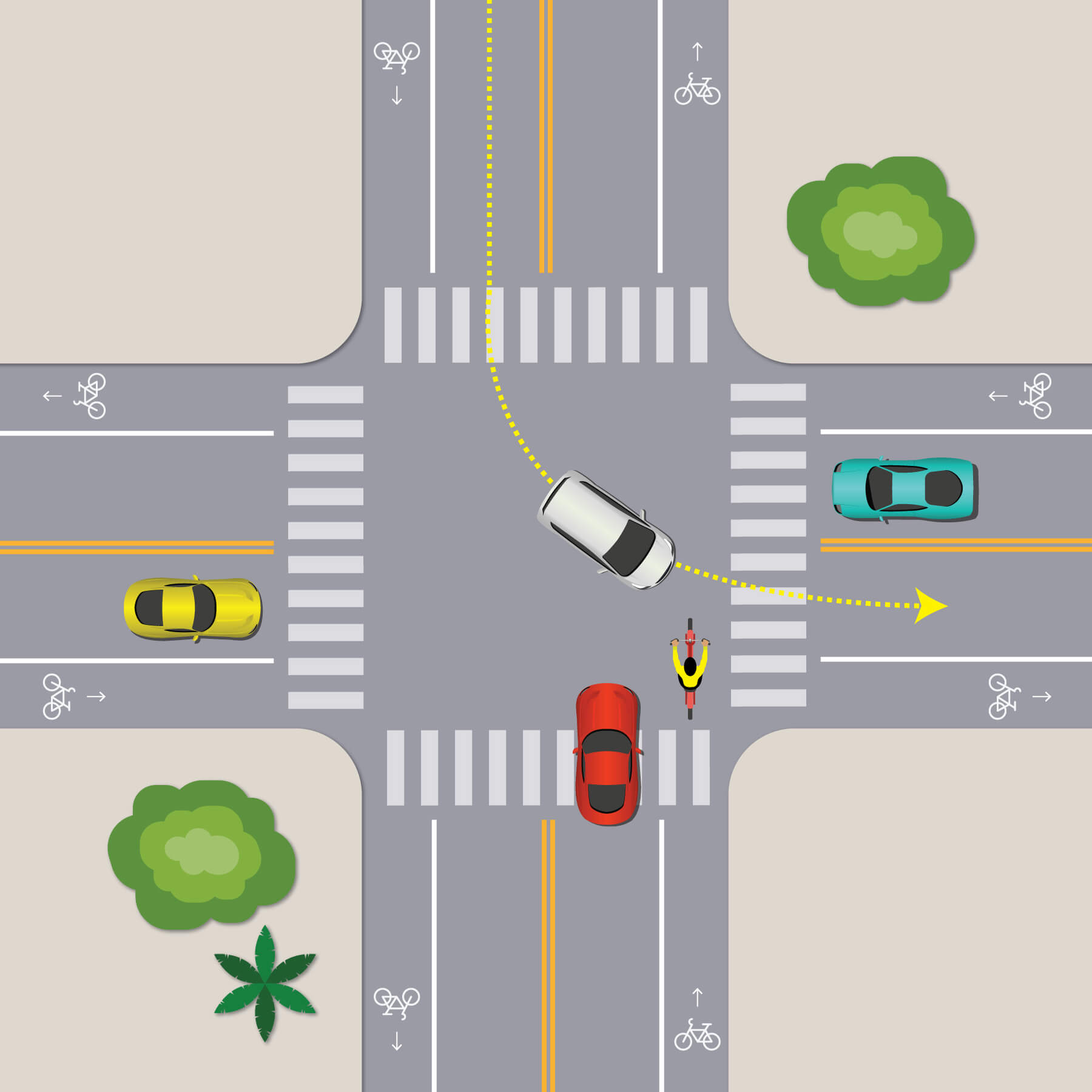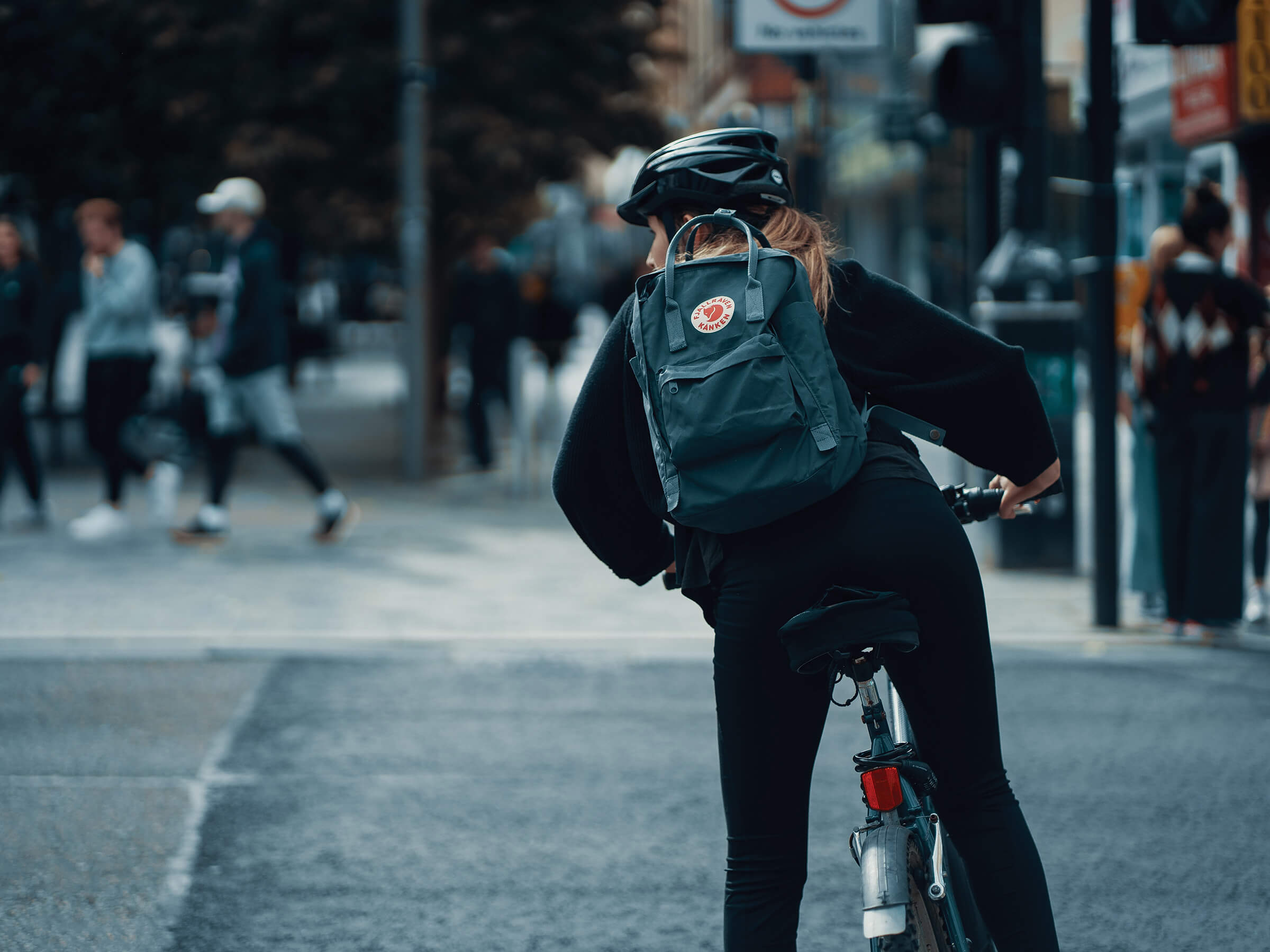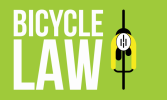Slipping the Left Cross
Many cyclists have heard of the right hook — but its similarly boxing-inspired counterpart, the left cross, is another of the “Big Five” types of collisions riders face.
What is a left cross?
A left cross collision occurs when a motorist makes a left turn across the path of an oncoming cyclist. This collision type poses a significant threat to urban cyclists in particular. The rapid nature of the turn, combined with the cyclist’s momentum, leaves little time for reaction. Unlike collisions where cyclists are overtaken, the left cross involves a direct frontal or near-frontal impact, dangerously multiplying the force involved and often increasing the severity of injuries.
 A left cross collision occurs when a motorist makes a left turn across the path of an oncoming cyclist.
A left cross collision occurs when a motorist makes a left turn across the path of an oncoming cyclist.
What factors contribute to left cross collisions?
Similar to right hook collisions, left crosses often stem from a motorist’s failure to adequately scan for — and yield to — oncoming cyclists. Drivers making left turns are often focused on oncoming car traffic and may overlook cyclists approaching from the opposite direction, especially if the cyclist is in a less visible position or traveling at a speed the driver misjudges.
The driver may also be distracted, hurried, or simply not expecting a cyclist to be traveling at that speed or in that location. Poor visibility conditions, such as rain, fog, or darkness, can further exacerbate the problem. Complex intersections with multiple lanes or obscured sightlines also increase the risk of these collisions.
Even when a motorist does see you prior to initiating their left turn, you may still be at risk if they misjudge your speed and distance. They might think they have enough time to complete their turn before you reach the intersection, leading to a collision.
 Position yourself. Scan and anticipate. Photo: Ross Sneddon, Unsplash
Position yourself. Scan and anticipate. Photo: Ross Sneddon, Unsplash
How can I reduce my left cross risk?
The danger of left cross collisions, caused by motorists who fail to signal or check for cyclists before turning, is all too familiar to us. As riders, what strategies can we employ to mitigate this risk?
Riding technique is key. Consider these tips when approaching an intersection:
- Position yourself: Don’t hug the curb. If safe and legal, take the lane or position yourself so you are visible to drivers preparing to turn left. This helps you avoid being in a driver’s blind spot.
- Scan and anticipate: As you approach an intersection, scan for vehicles approaching from the opposite direction. Look for signs of a driver preparing to turn left, such as their position in the lane, their wheel direction, and any signals (though these are often unreliable).
- Make eye contact: If possible, try to make eye contact with drivers who appear to be preparing to turn left. This can help confirm they see you.
- Slow down: Reduce your speed as you approach intersections, giving yourself more time to react if a driver turns left unexpectedly.
- Be prepared to react: Have your brakes ready and be prepared to take evasive action if a driver begins to turn left in front of you. This might involve braking hard, swerving, or even stopping suddenly.
Visibility (or conspicuity, which we’ve written about on our blog) is also paramount.
While we cannot control driver behavior, we can increase their chances of seeing us, as well as their time to react. Bright, reflective clothing and front and rear lights are helpful for this, even during daylight hours. We shouldn’t have to dress like Christmas trees simply to commute or get some exercise, but we are also realistic about the potentially grave consequences of car-on-bike collisions.
A 2018 study on cyclist visibility demonstrated that wearing bright clothing significantly reduces the risk of collisions.* Specifically, high-visibility clothing, such as fluorescent yellow or orange, increases the likelihood of being seen by drivers, especially during daylight hours. Reflective materials are crucial for nighttime visibility.
In short, being proactive in your equipment choices and defensive in your riding techniques can help to minimize the risk of a left cross collision.
*Lahrmann, et al., The effect of a yellow bicycle jacket on cyclist accidents, Safety Science, Volume 108, October 2018, Pages 209-217.
Have you or someone you know been involved in a bicycle crash? Want to know about your rights? Are you a lawyer handling a bicycle crash who wants the best result for your client? Contact Bicycle Law at (866) 835-6529 or info@bicyclelaw.com.
Bicycle Law’s lawyers practice law through Coopers LLP, which has lawyers licensed in California, Oregon, and Washington state, and can affiliate with local counsel on bicycle cases across the country to make sure cyclists benefit from cycling-focused lawyers.
